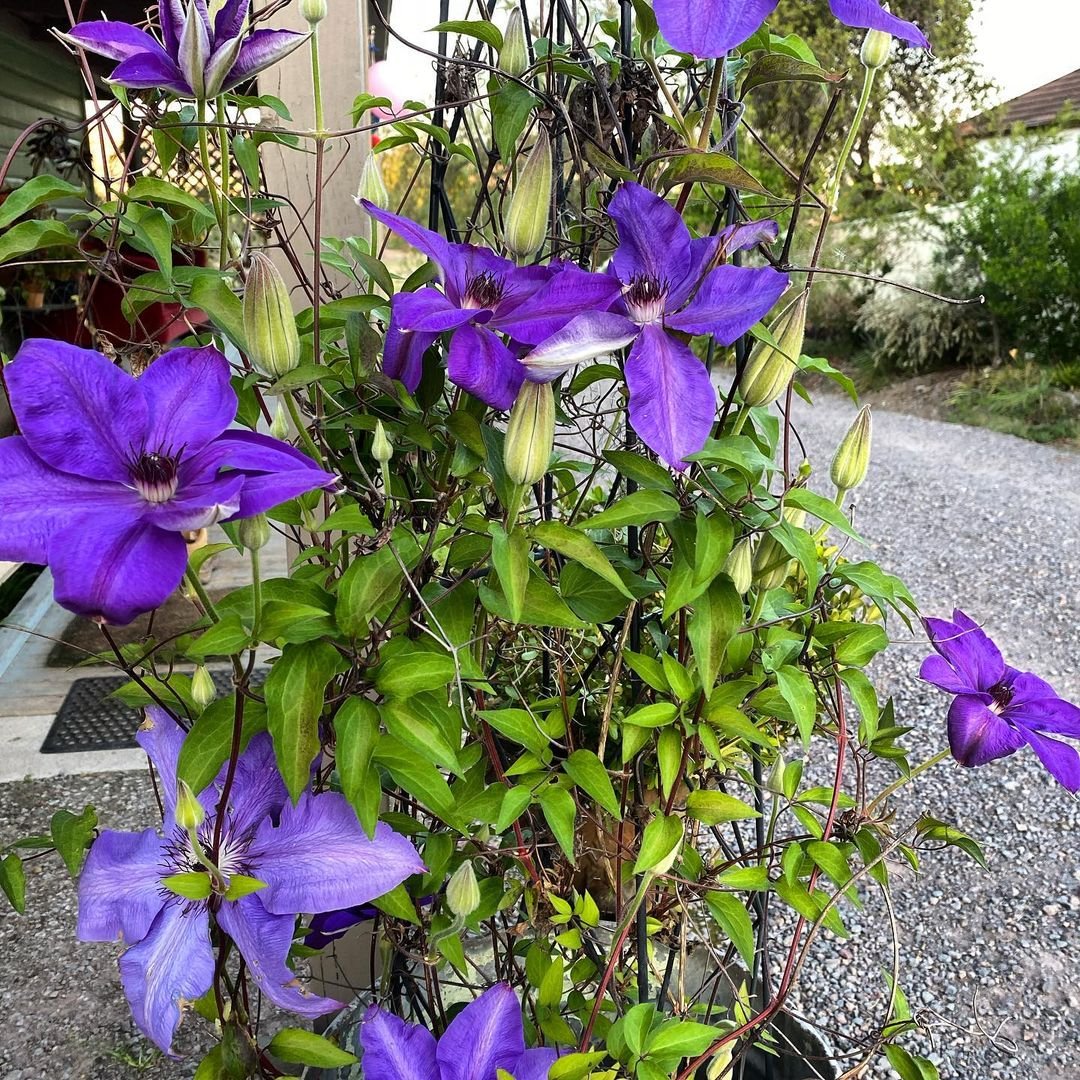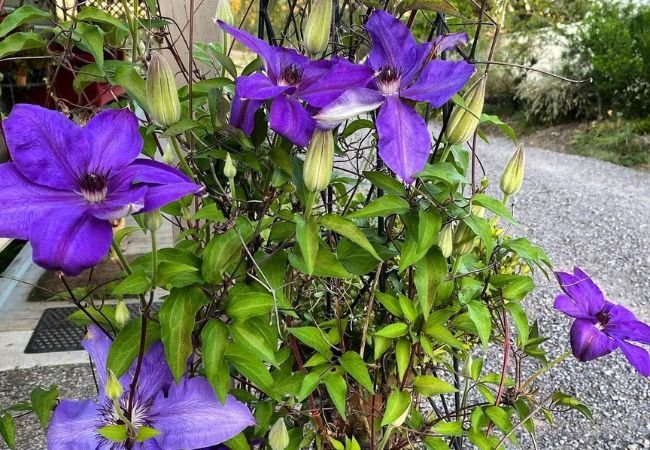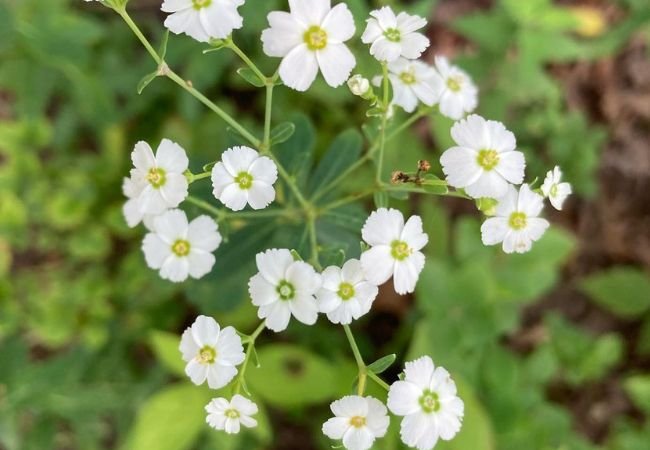Learn how to grow and care for Clematis Jackmanii, a stunning climbing vine with vibrant purple blooms. Discover tips for planting, pruning and maximizing its beauty in your garden.
Are you looking for a show-stopping vine to add vertical interest and vibrant color to your garden? Look no further than Clematis Jackmanii. This beloved climbing plant, with its large, velvety purple flowers, has been a favorite among gardeners for over 150 years. In this guide, we’ll explore everything you need to know to grow and care for this classic beauty.
Here is a chart with detailed information on Clematis ‘Jackmanii’:
| Category | Information |
|---|---|
| Botanical Name | Clematis ‘Jackmanii’ |
| Common Name | Clematis ‘Jackmanii’ |
| Plant Type | Deciduous Perennial Climber |
| Hardiness Zone | 4-9 |
| Sun Exposure | Full Sun to Partial Shade |
| Soil Type | Well-drained, Moist, Fertile Soil |
| Watering | Regular, Keep Soil Consistently Moist |
| Growth Habit | Climbing, Twining |
| Height/Spread | 8-12 feet tall / 3-6 feet wide |
| Flowering Time | Summer (Usually June to September) |
| Flower Description | Large, Velvety Deep Purple Flowers, 4-6 inches wide |
| Special Features | Long Blooming Period, Attracts Pollinators (Bees, Butterflies), Low Maintenance, Ideal for Trellises, Arbors, and Fences |
What is Clematis Jackmanii?

Clematis Jackmanii, often simply called Jackman’s clematis, is a deciduous climbing vine known for its:
- Large, deep purple flowers (4-6 inches across)
- Vigorous growth (can reach 10-12 feet in height)
- Long blooming period (typically June to September)
- Ability to thrive in various climates (USDA zones 4-8)
First introduced in 1862 by English nurseryman George Jackman, this hybrid clematis quickly became popular due to its stunning flowers and robust nature.
How to Plant Clematis Jackmanii
Choosing the Right Location
Clematis Jackmanii thrives in:
- Full sun to partial shade (at least 6 hours of sunlight daily)
- Well-draining soil rich in organic matter
- Areas with good air circulation
Remember the old gardener’s saying: “Clematis like their heads in the sun and their feet in the shade.” This means the vine prefers cool, moist roots and sunny foliage.
Planting Steps:
- Dig a hole twice the size of the root ball.
- Mix compost or well-rotted manure into the soil.
- Plant the clematis 2-3 inches deeper than it was in its nursery pot.
- Backfill with soil and water thoroughly.
- Mulch around the base to keep roots cool and moist.
Caring for Your Clematis Jackmanii
Watering
- Water deeply and regularly, especially during the first growing season.
- Aim to keep the soil consistently moist but not waterlogged.
Fertilizing
- Feed your clematis in early spring with a balanced, slow-release fertilizer.
- Apply a layer of compost or well-rotted manure around the base annually.
Support
Clematis Jackmanii needs sturdy support to climb. Options include:
- Trellises
- Arbors
- Fences
- Sturdy garden structures
Ensure the support is in place at planting time to avoid disturbing the roots later.
Pruning
Clematis Jackmanii belongs to pruning Group 3, which means it blooms on new wood. Here’s how to prune:
- In late winter or early spring, cut all stems back to about 12-18 inches from the ground.
- Remove any dead or weak growth.
- Throughout the growing season, you can trim lightly to shape the plant if needed.
This pruning method encourages vigorous new growth and abundant blooms.
Common Problems and Solutions
Clematis Wilt
Symptoms: Sudden wilting and blackening of stems and leaves.
Solution:
- Cut affected stems back to healthy tissue.
- Improve air circulation around the plant.
- Ensure good drainage to prevent fungal growth.
Powdery Mildew
Symptoms: White, powdery coating on leaves.
Solution:
- Remove affected leaves.
- Improve air circulation.
- Apply a fungicide if the problem persists.
Slugs and Snails
These pests can damage young shoots and leaves.
Solution:
- Use slug bait or traps.
- Create barriers with copper tape or eggshells.
Creative Ways to Use Clematis Jackmanii in Your Garden
- Vertical Accent: Train it up a trellis or arbor for a stunning focal point.
- Fence Cover: Let it ramble along a fence for a beautiful, living screen.
- Container Gardening: Grow in a large pot with a trellis for patio or balcony gardens.
- Companion Planting: Pair with roses or other clematis varieties for a diverse display.
- Tree Climber: Allow it to climb up into a small tree for a naturalistic look.
Clematis Jackmanii is a timeless beauty that can transform any garden with its lush foliage and stunning purple blooms. By providing the right conditions and care, you can enjoy this classic climbing vine for years to come. Whether you’re an experienced gardener or a beginner, Clematis Jackmanii is a rewarding plant that will bring joy and color to your outdoor space.
Learn more about clematis varieties
Discover tips for companion planting with clematis
Remember, patience is key when growing clematis. While it may take a couple of years for your Clematis Jackmanii to reach its full potential, the wait is well worth it for the spectacular display it will provide. Happy gardening!
For more gardening tips and plant care guides, visit usagardenhub.com.







One comment on “Clematis Jackmanii : A Guide to Growing This Classic Climbing Vine”